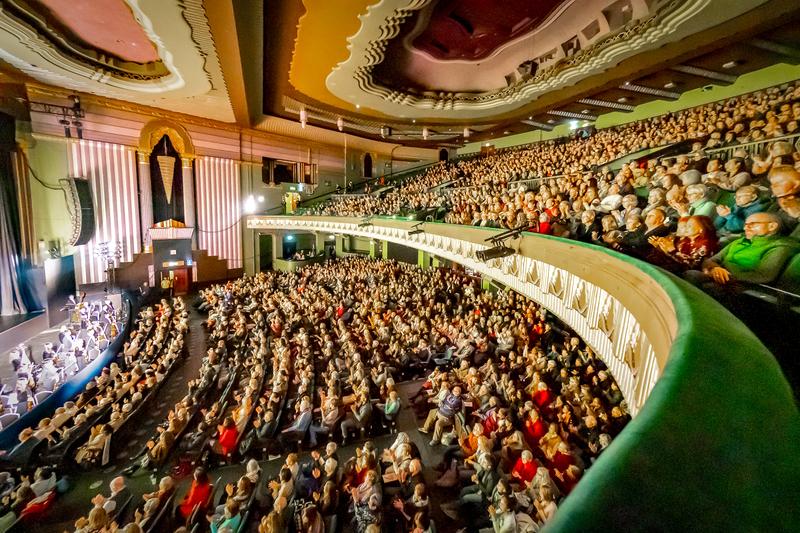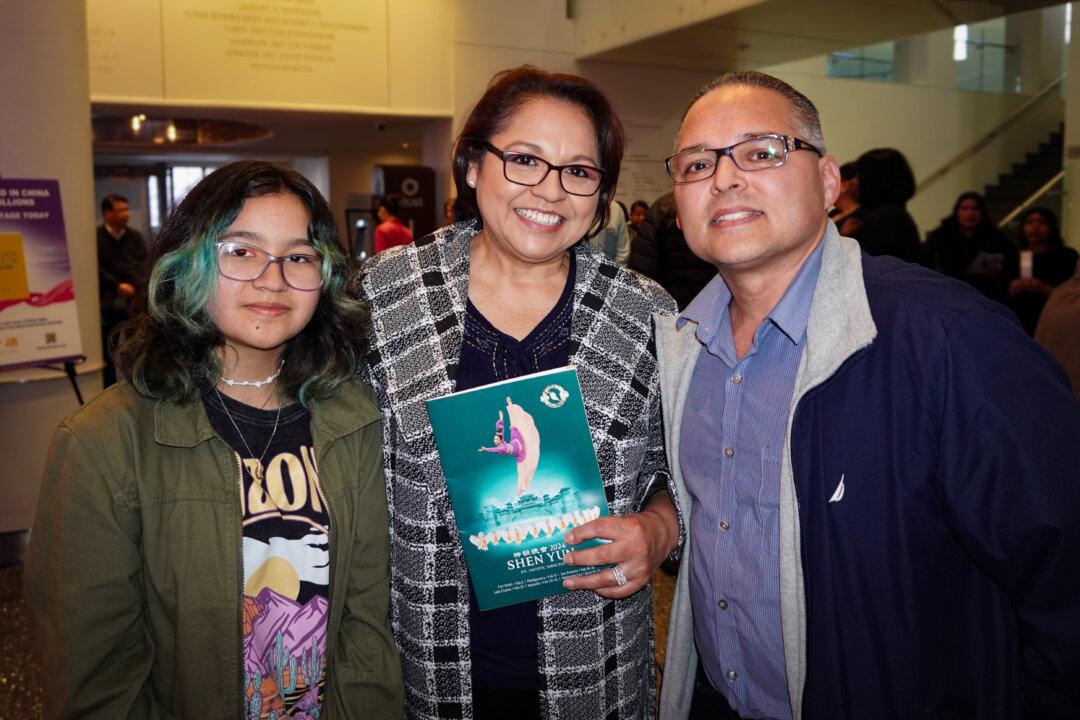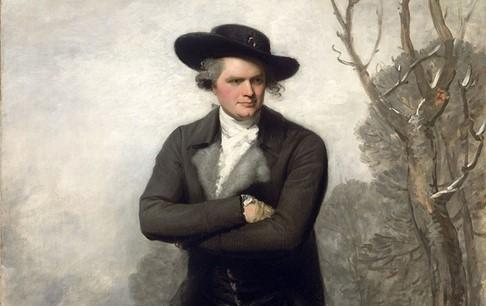SUGAR LOAF—The Seligmann Center for the Arts was alive on Jan. 10 with dancers, and moving gracefully among the couples was internationally-renowned Tango master, Jorges Torres. At the request of his friend and fellow tango instructor, Gustavo Rios, Torres came to Tango Under the Tent, which uses the center.
Torres watched couples move around the softly-lit dance floor and would give individual guidance, perhaps demonstrate a step with the female partner, and gently acknowledge improvement.
President of Tango Under the Tent Luz Lopez says Torres is “best of the best.” Torres has danced since childhood, learning Argentine folk dance, tango, flamenco, and other styles. He finally decided to narrow down to one he kept for “my own pleasure—Argentine Tango. ”
Torres says tango is for everyone. “In this I feel like I am alive. It’s ageless, so I can dance until I’m 200. You don’t need to be young. You don’t need to be tall, blue-eyed, you don’t need to be special.”
“You don’t need to be even Argentinian,” Torres says. “You just need you, your love, to become somebody better as a human being, to share, not to use people, to dance with people.”
Dance Master
Lopez says Torres “is someone who really carries the soul of the Argentine tango in this country.” He travels around showing the steps and flavor of the dance.
“We try to give them the right tools, the right knowledge, the real meaning of Argentine Tango,” Torres says. The dance is “something pure, something to share.” Tango helps people to behave in a more civilized way—“to become again a lady and a gentleman.”
Tango offsets the disconnect people often feel in today’s society. “Society sometimes makes people colder.” He says his mission is to humanize the dance. “Not to just to think about things, but also to be in the moment.” He says everyone had this once as children.
Torres is on a mission to help people unlearn the way they dance. “The hardest part [in teaching tango] is to make them understand that it’s not a commercial thing. It’s to be something more human, as who we are originally, not who we became.” He says people think it’s best to learn all the steps. “The more they know, or the more steps they learn, the better dancer they become. It’s not true.
“We try to make them understand that life is simple. We try to go back to the simplicity of life, of love, respect. Just to be present. This dance allows you to be present. I think it’s something we have to reinforce in everybody.”
Grounding
It’s all about connecting, Lopez says. “It starts with a connection with oneself. If you don’t connect with yourself, then you cannot feel the person next to you. It starts with your own core and your own connection to the floor. It grounds you.”
Lopez echoes Torres that we as a society are disconnected. “We feel so isolated in this modern world because we work too much, our families are far away. When we dance, we bring ourselves back into ourselves, and we actually connect with that person, whoever that person is at that moment.”
The physical pleasure is more than exercise. Good dancers show body symmetry, coordination, lack of illness, and resistance to infections, according to experts. A physical response to tango has been a release of oxytocin, which promotes social recognition and bonding. The hormone evokes contentment, less anxiety, calm, and feeling of security when dancing. Scientists have found that people find others more trustworthy after its release.
The release of oxytocin can increase positive attitudes, such as bonding, toward individuals with similar characteristics, who then become classified as “in-group” members and facilitates trust and attachment between individuals. Oxytocin is often referred to as the “love hormone.”
Hooked on Tango
Dancers at the event approve the dance. Long-time board members Adele and Jerry Kline gave Tango Under the Tent founder Dr. Gerry Neri his first tango lessons. They have been to Buenos Aires eleven times and have promoted Argentine Tango for over 15 years in the Hudson Valley. Jerry says dancing the tango is as easy as walking in rhythm.
Teresa O'Keefe was widowed 35 years ago. “I saw tango and I had to do it.” She’s been dancing tango for 30 years. Ferdinand Ritz comes for “the pretty ladies.”
Sigfredo Carrion speaks Spanish and understands the lyrics. “Mostly because it’s beautiful music. It allows you to become part of the music.”
Bill Kennick of Greenwood Lake has been a ballroom dancer. He started tango six months ago and likes the improvisation. “There are no steps even though there are many steps. You don’t have to do it a certain way provided you know what you are doing. In theory, you can make up anything, at any point.”
Tango Under the Tent board member Georgina Borgese has tangoed for a year and says the dance gives her a way to express herself. She also enjoys “music that is the most beautiful music I have ever heard.”
Charles Paty says the friendly, social surroundings are worth it to travel over an hour to dance at Seligmann. “I love tango because of the freedom of expression and just being able to have a good time. His wife Louise likes being a woman in the dance. ”All I have to do is put myself in his arms and follow my partner. It’s a time when the guy is boss and the women love it.”
Amparo and Reuven Freuman of Nanuet also travel a ways to enjoy the Seligmann milonga (milonga is a place or event where tango is danced). Reuven said he came from ballroom dancing. “Then it’s the music and the movement and everything started talking to me. It’s like a different language.” His wife Amparo grew up with her mother singing tangoes in her native Colombia.
Tango Under the Tent Begins
Ingrid Jacob and her husband call themselves Tango Under the Tent’s ambassadors and started when Neri opened up his home to tango dancers in the summer of 2007. He fell in love with tango, but soon after was diagnosed with cancer.
He wanted to continue to dance and share his love with others. Neri had a tent in his garden for business meetings. He put in a dance floor and invited people to dance. “He had a beautiful garden. The tent was lit so romantically. The setting was just so gorgeous,” Jacob said. Neri set up a nonprofit so the group could continue.
Torres travels around the world teaching and inspiring dancers in the art of Argentine Tango. He captains “Forever Tango,” serves as a juror of the tango championships, and is the artistic director for the American Tango Institute. He resides in New York city where he hosts a successful monthly milonga.
Rios gives beginner tango lessons on Mondays at the Seligmann Center.
Lopez says the Omego Institute in Reinbeck teaches Argentine tango as a way to be meditative. “It’s about finding ourselves and our core, our center. If you move from that center, you send that energy to the person in front of you and that person can move with you.”
To contact this reporter, please email [email protected].





